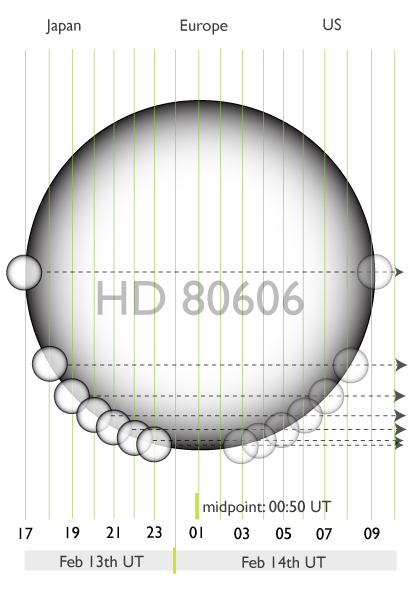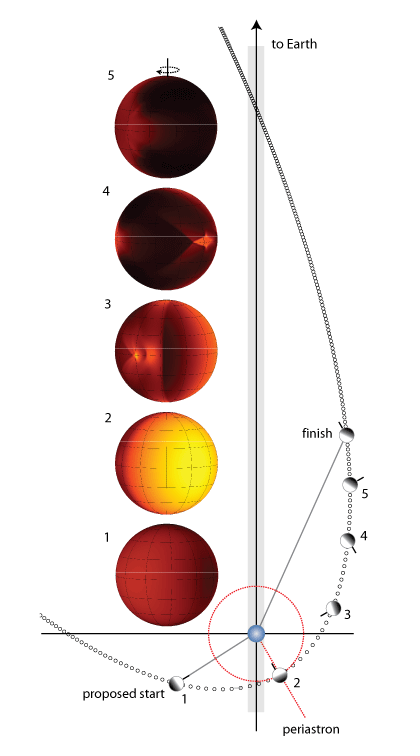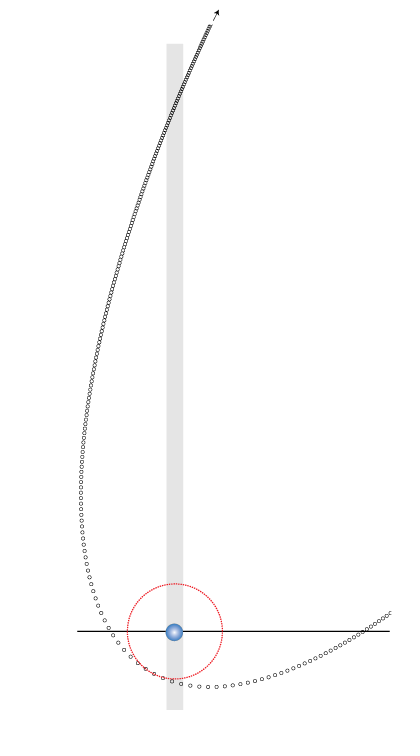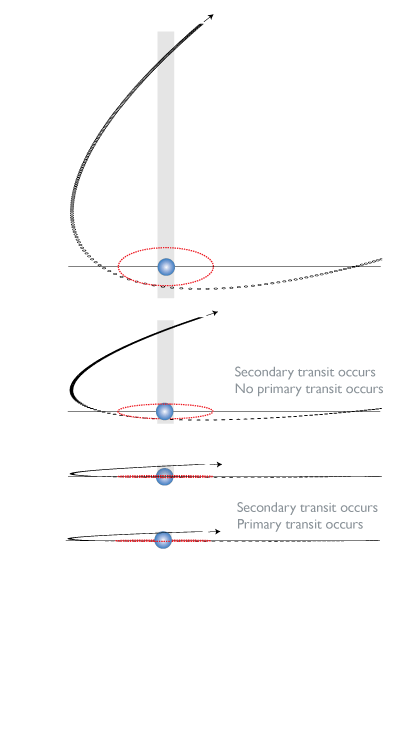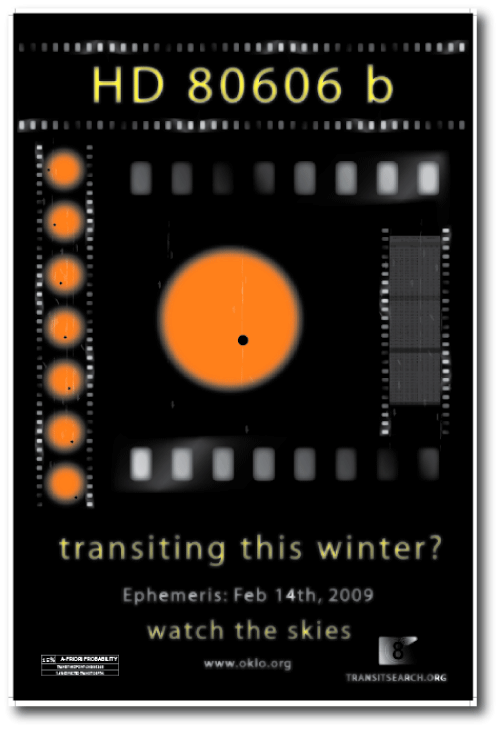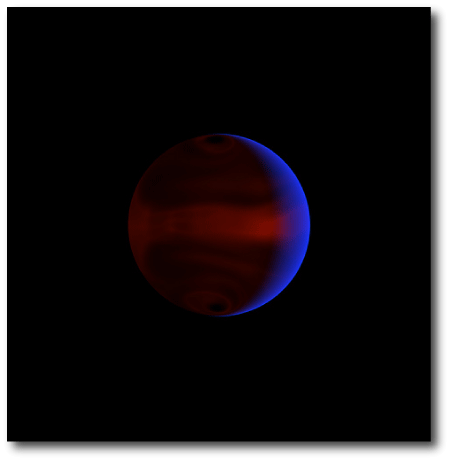
Image from computer modeling by J. Langton and D. Kasen.
HD 80606b — everyone’s second-favorite planet — is in the news! Our article describing the Spitzer Space Telescope’s 8-micron observations of the planet’s periastron passage made the cover of this week’s issue of Nature, and JPL has issued a press release on the results.
The planet has been a long-running topic here at oklo.org, with the storyline developing over a series of posts during the past few years. A incomplete list might include:
Post one (older), two, three, four, five, though six (newer).
The outsize eccentricity of HD 80606b’s orbit leads to very brief, very intense encounters every 111.4 days as the planet swings through periastron. On the Nov. 20, 2007 encounter, we used Spitzer to monitor the 8-micron emission of the star and planet for a thirty hour period. The observations spanned the time leading up to superior conjunction and periastron, and continued for several hours thereafter:
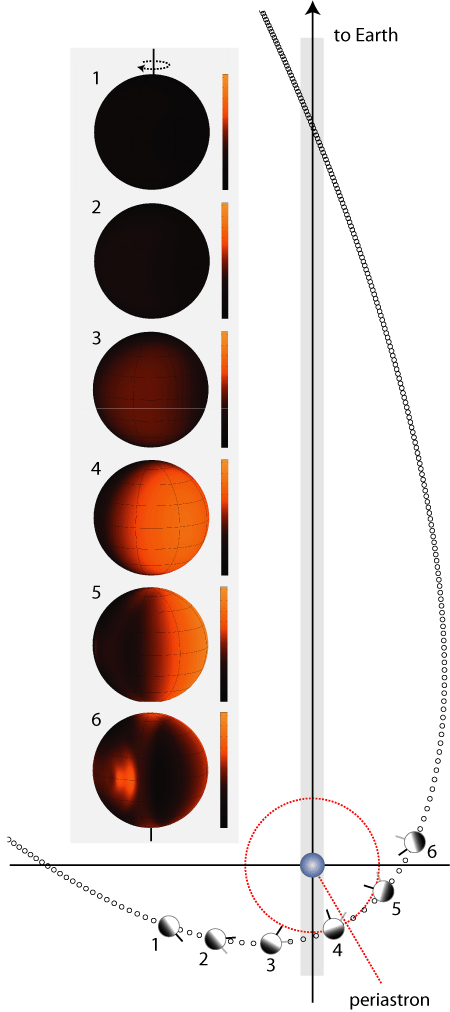
The resulting time series looks like this:
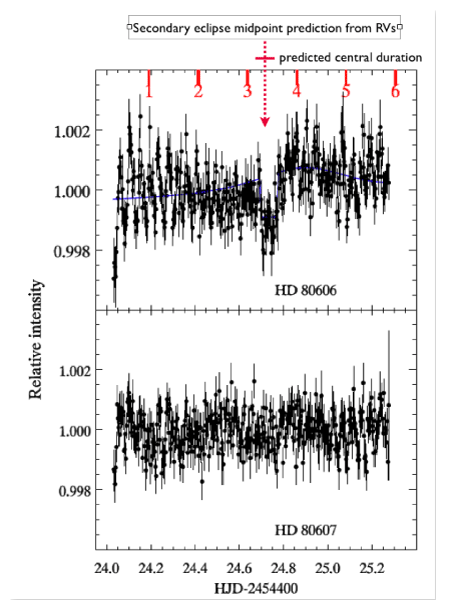
The most remarkable feature of the light curve is the dip at time 2454424.72. The alignment of the planetary orbit turns out to be close enough to edge-on that a secondary eclipse occurs. The a-priori chance of observing the eclipse was only about 15%, and so we were lucky. Our interpretation of the light curve is that we’re seeing the planet heat up rapidly, from a temperature of roughly 800K to a temperature of about 1500K over a time period lasting roughly five or six hours. This indicates that the starlight is being absorbed at quite a high level in the atmosphere, where the air is thin and the heat capacity is low.
The details are all in the Nature paper. I’ll be posting it on astro-ph shortly, but in the meantime, a .pdf draft of the article is here, along with the (quite extensive) supplemental information section, and the figures (one and two) from the article.
The information that comes directly from Spitzer amounts to a 30-hour, one-pixel grayscale movie of a storm that was brewing on the planet back in the Monroe Administration. Hydrodynamical modeling, however, can flesh out the details, and the goal over the coming years will be to compute simulations that are as detailed and as physically correct as possible. In the next post, I’ll go into more detail, but here’s an advance look at the results of a “synthetic mission” in which a probe has been inserted into orbit around the planet 2.2 days prior to periastron. The resulting footage runs through 8.9 days after periastron. The orbital dynamics and the illumination are all self-consistent…
Footage from a synthetic probe.

